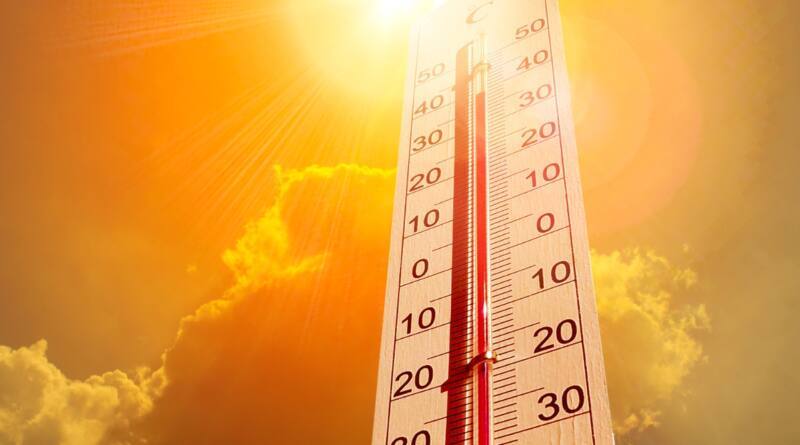India Is Now Under The Grip Of Severe Heatwaves
A strong heatwave is suffocating parts of northern and central India; Delhi has recorded a tentative record high of 52.3 °C (126.1 °F). It would be the highest ever recorded in India, if confirmed.
More than 37 locations across the country recorded temperatures above 45°C this week. The heat-related sickness warnings have resulted in at least three deaths. The authorities have warned those caught wasting water that they will face fines as the city grapples with shortages and reduced supplies in some regions. 200 teams would be sent in, according to Water Minister Atishi, to take tough measures against individuals who wash their cars with hosepipes and allow their tanks to overflow.
“It’s been unbearably hot for the past few days, and it’s getting much worse as the days go by,” Delhi resident Manish stated. Many have also mentioned that the heat made it impossible to even eat properly. They remarked, “We have experienced heat before, but it feels unbearable this time.” “It is hard to stand outside at all.” Because people resort to air conditioning, ceiling fans, and coolers to beat the heat, the city’s power usage has reached an all-time high.
On Tuesday, a consumer court judge suspended the proceedings because it was too hot to hold court without air conditioning. Delhi is among the areas in northwest India for which red advisories have been issued, indicating a very high risk of heat-related illnesses and strokes. According to medical professionals in Delhi, there has been an increase in medical consultations during the heatwave.
The high temperatures mostly affected the elderly, those with pre-existing medical conditions, the poorest, and migrant labourers who work on construction sites and other areas.
The lieutenant governor of Delhi has ordered the provision of water and three hours of paid time off for construction site labourers. Additionally, he has requested that drinking water pots be available at bus stops. According to Kuldeep Srivastava, regional head of IMD, scorching winds from the state of Rajasthan are the reason for Delhi’s soaring temperatures. Churu, a Rajasthani city, and Sirsa, a northern Haryana state, have also recorded temperatures exceeding 50 degrees Celsius. The city of Jaipur in Rajasthan reported three deaths from heat stroke.
A number of school children in the eastern state of Bihar’s town of Sheikhpura were taken to the hospital after passing out from the heat, according to local media. In Jammu and Kashmir, the heat is fueling several forest fires.
Heat Waves
A heat wave is an extended period of exceptionally hot weather, typically lasting two or more days. The temperatures must be higher than the area’s historical averages in order to qualify as a heat wave.
In the twenty-first century, climate change will cause global temperatures to rise, as well as an increase in the frequency and severity of heatwaves. High temperatures have the potential to harm people’s health and cause more deaths. Long-term exposure to high daytime and nocturnal temperatures puts the body under cumulative physiological stress, exacerbating the world’s leading causes of death, such as diabetes mellitus, kidney illness, and respiratory and cardiovascular disorders. Heatwaves can have a severe short-term effect on large populations, frequently result in public health emergencies, increase mortality, and have cascading socioeconomic effects (e.g., reduced labour productivity and job capacity).
In addition, they may result in a reduction in the ability to provide health services since heatwaves sometimes coincide with power outages that affect transportation, water infrastructure, and medical facilities.
In India, heat waves usually last from March through June, and in certain extreme circumstances, they can last until July. On average, the northern regions of the country experience five to six heat wave episodes per year. A single incident can affect a large population, endure for weeks, and happen one after the other. Extreme heat waves impacted Bihar, Jharkhand, Gangetic West Bengal, Odisha, Punjab, Haryana, Chandigarh & Delhi, Rajasthan, Maharashtra, West Madhya Pradesh, and Gujarat in 2016.
What are the criteria to declare a heat wave in India?
When a station’s maximum temperature reaches at least 40 °C in plains regions or at least 30 °C in hilly regions, we declare a heat wave.
- The deviation from the normal heat wave is between 4.50°C and 6.40°C. In severe Heat Wave it is >6.40°C
- Based on the actual maximum temperature, the deviation from normal is greater than ≥45°C and >47°C degrees Celsius.
- A heat wave occurs when the actual maximum temperature surpasses If two stations in a meteorological subdivision reach the preceding conditions for at least two days in a row and declare a severe heat wave on the second day, the actual maximum temperature must be at least 47 °C.
What is the heat wave criterion for India’s coastal stations?
Declaring a heat wave is possible if the actual highest temperature exceeds 370 °C and the maximum temperature deviates by 4.50 °C or more from the norm. The heat wave over India reaches its peak in May.
Heat waves and Wellness
The timing, severity, and length of a temperature event, the degree of acclimatisation, and the degree to which the local population, institutions, and infrastructure can adjust to the current environment all influence the extent and kind of health effects associated with heat. The exact temperature at which something is considered dangerous depends on a number of elements, including wind, humidity, human acclimatisation, and local heat readiness. With certain public health initiatives, the detrimental effects of heat on health are foreseeable and mainly avoidable. Prolonged exposure to high temperatures affects all humans physiologically, exacerbating pre-existing illnesses and leading to premature death and disability.
The primary impacts of heat on health are as follows:
- Exposure to hotter than usual weather causes rapid increases in heat gain, which compromises the body’s ability to regulate temperature. This can lead to a series of disorders, including heat cramps, heat exhaustion, heatstroke, and hyperthermia.
- Heat-related deaths and hospital admissions can happen very quickly (on the same day) or slowly (over several days), which might hasten the passing of illness in the already fragile. This is especially true in the early stages of heatwaves. Higher rates of disease and mortality are associated with even minor variations in the seasonal average temperature. Extreme temperature variations can exacerbate long-term health issues, such as diabetes-related disorders and diseases of the heart, lungs, and brain.
- Heat also has important secondary health effects. Heat can have an impact on human behaviour, disease spread, health service provision, air quality, and the importance of social infrastructure such as energy, transportation, and water.
Use these useful suggestions to stay safe during a heat wave.
- Go gentle on yourself. Avoid doing heavy lifting and move more slowly.
- Wear appropriate clothing. Put on airy, pastel-coloured apparel.
- Steer clear of meat and high-protein foods. Consuming them can increase your body’s heat output.
- Sip plenty of water. Unless you have a medical condition that changes with fluid intake, it’s a good idea to stay as hydrated as possible.
- Look for a cool area to hang out. Do you not own a personal air conditioner? Go to a public facility (such as a library) that has one, or find a friend who does.
- Steer clear of too much sunlight. Your body has a tougher time cooling down after a sunburn.
- Drive carefully at all times. Automobiles heat up quite quickly. When parked, never leave your windows closed, and exercise caution around hot metal objects, such as seatbelt buckles, both inside and outside the vehicle.




